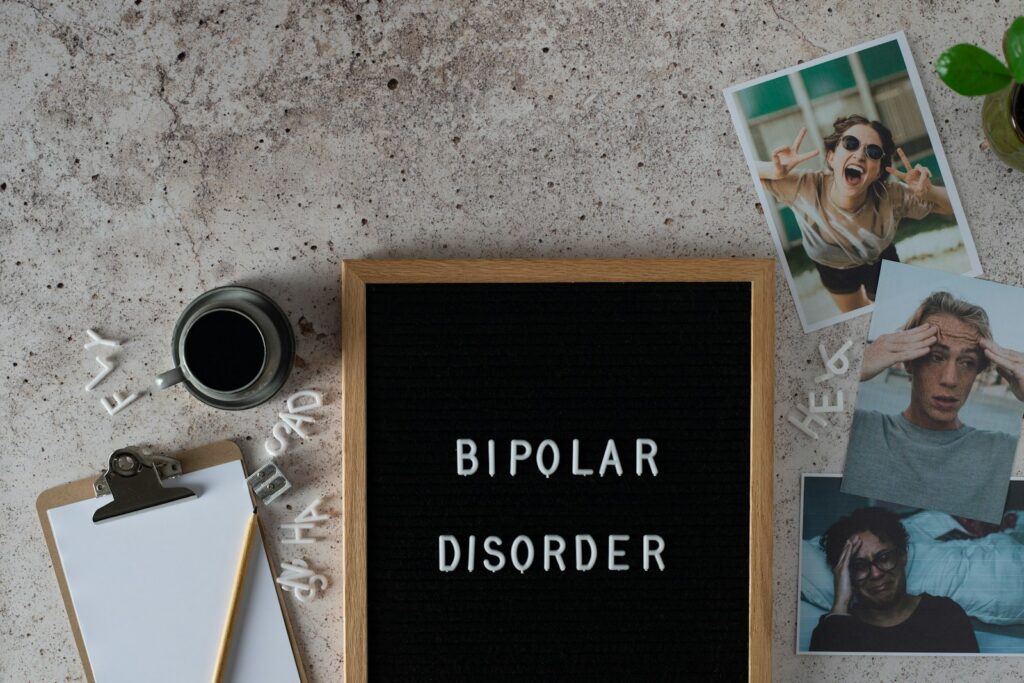When you hear “bipolar disorder,” you may automatically think, “mood swings.” While mood swings are a symptom of bipolar disorder, it’s much more complex than that. As a mental health condition, there are actually several different types of bipolar disorder. Because of this, one person’s journey with bipolar disorder may look entirely different than someone else’s experience. That’s why it’s important to familiarize yourself with the various types of bipolar disorder so you can find the most relevant mental health treatment for you or your loved one.
Bipolar Disorder: An Overview
Formerly known as manic depression, Bipolar disorder is classified as a brain disorder that causes changes to your energy, mood, and ability to function, according to the American Psychiatric Association. While it’s typical for someone to experience mood changes for a few hours from time to time, if you have bipolar disorder, your mood episodes may last for days or weeks and be much more extreme, impacting your relationships, work, and daily responsibilities. These mood swings shift from intense highs, called manic episodes, and dramatic lows, called depressive episodes.
During these “high” periods of mania, you may experience euphoria and high levels of energy. At the same time, you may become increasingly irritable and unpredictable, with impaired judgment that leads to impulsive and risky behavior. You may even be unaware of the negative impact of your actions during this time. Some people, shares the National Alliance on Mental Health, can have manic episodes several times throughout their life, while others may only have them on rare occasions.
Following the highs, a major depressive episode is often debilitating and lengthy, causing feelings of sadness, anxiousness, worthlessness, and guilt. You may struggle with low energy and the inability to make decisions, impacting your day-to-day life. Your sleep and eating patterns may noticeably change as well.
A Closer Look at the Different Types of Bi polar Disorder
While bipolar disorder is often defined as a singular condition, it really represents a spectrum of different types of bipolar disorder, including:
Bipolar I
Bipolar I is considered the most common among the types of bipolar disorder. If you have Bipolar I, your manic episodes will likely last at least seven days or may even be severe enough to require a hospital stay. These episodes of mania are typically accompanied by depressive episodes, which will last for at least two weeks. The highs of mania can be exhilarating but sadly can also lead to reckless activity, improper judgment, and delusions of grandiosity. Living with Bipolar I means you may often experience significant disruptions in your personal and professional life.
Bipolar II
Though some may mistakenly consider this a weaker form of Bipolar I, Bipolar II is separately diagnosed and characterized by recurrent depressive episodes paired with hypomanic episodes. These hypomanic episodes are less severe than full-blown mania in Bipolar I but still can make an impact, causing increased energy, creativity, and productivity, as well as irritability, impulsivity, and disrupted sleep patterns. If you have Bipolar II, you may struggle with intense depressive episodes that cause substantial sadness, lethargy, and feelings of hopelessness. Between these episodes however, you can lead a normal life.
Cyclothymic Disorder (Cyclothymia)
To be diagnosed with cyclothymic disorder, or cyclothymia, you will have experienced a chronic and irregular pattern of hypomanic symptoms alternating with depressive symptoms lasting for at least two years (or one year in children and teenagers). While less severe than Bipolar I or Bipolar II, cyclothymic disorder can still significantly affect your well-being and daily life. Consequently, you may experience periods of elevated mood and creativity followed by periods of sadness and lethargy. Some people find it challenging to maintain stable relationships and employment while others can enjoy successful, productive lives.
Rapid Cycling Bipolar
If you have Bipolar I or Bipolar II, you could also be diagnosed with rapid cycling bipolar. Though a temporary experience for most people with bipolar disorder, rapid cycling bipolar means you have at least four different mood episodes within the year. This is considered rapid, as typically those with bipolar disorder would only have one or two mood episodes in a 12-month timeframe. These rapid mood swings occur at random and will vary in length, with some lasting just a few hours or a few days. In some cases, you can even experience ultra-rapid cycling bipolar, which means you have four different episodes within one month.
Bipolar With Mixed Features
Bipolar with Mixed Features is characterized by experiencing both manic and depressive symptoms at the same time. That means you could be full of energy while feeling sad and hopeless simultaneously. According to Psychiatric News, Bipolar with Mixed Features patients may have a higher risk of switching to mania when treated with antidepressants. You also could be at greater risk of frequent hospitalization, psychotic episodes, and suicide.
Bipolar With Seasonal Features
Among the different types of bipolar disorder, one is actually influenced by the changing seasons: Bipolar with Seasonal Features. This type of bipolar means you likely experience depressive episodes during the fall or winter months, as well as manic or hypomanic episodes in the spring or summer.
Unspecified or Other Specified Bipolar
If you have “Unspecified” or “Other Specified” Bipolar, it means your symptoms don’t meet the criteria for Bipolar I, Bipolar II, or Cyclothymic Disorder. In these cases, you may have substantial mood swings, but the symptoms aren’t as severe or lasting as other types of bipolar disorder.
Finding Treatment for the Different Types of Bipolar Disorder
While there’s no lifelong cure for bipolar disorder, it can be managed well with the right bipolar disorder treatment. For many, this looks like a combination of medication and psychotherapy. Yet some people may also struggle with co-occurring disorders like bipolar disorder and alcohol abuse or bipolar disorder and drug addiction. That’s why it’s critical to partner with a comprehensive dual diagnosis treatment center that can fully address all your conditions.
At Integrative Life Center in Nashville, TN, we take a holistic approach to treating your bipolar disorder and any co-occurring issues, offering a combination of traditional and experiential therapies personalized to your individual needs. With our help, you can be empowered to manage your bipolar disorder in a healthy way. If you’re ready to pursue a fulfilling life with bipolar disorder on your own terms, contact us today to learn more.




